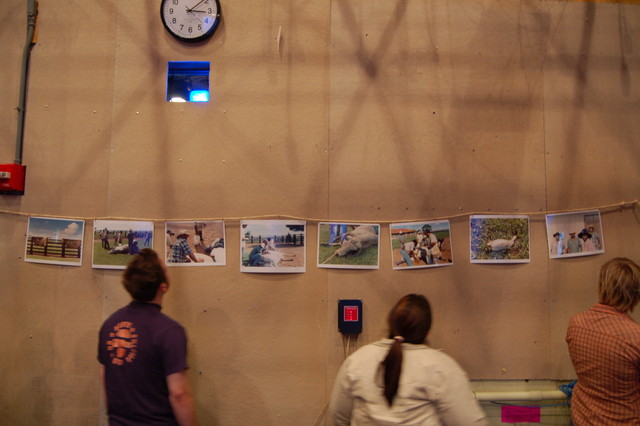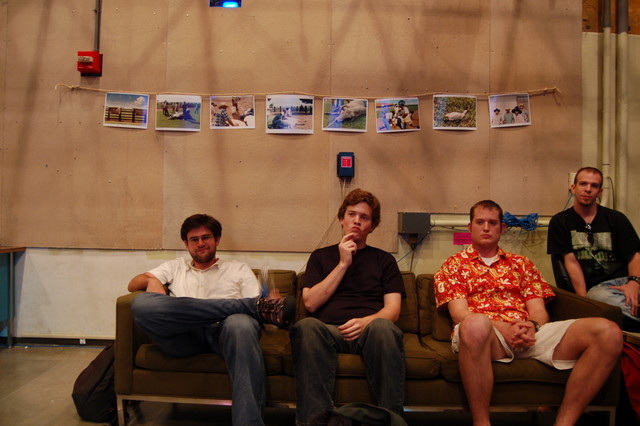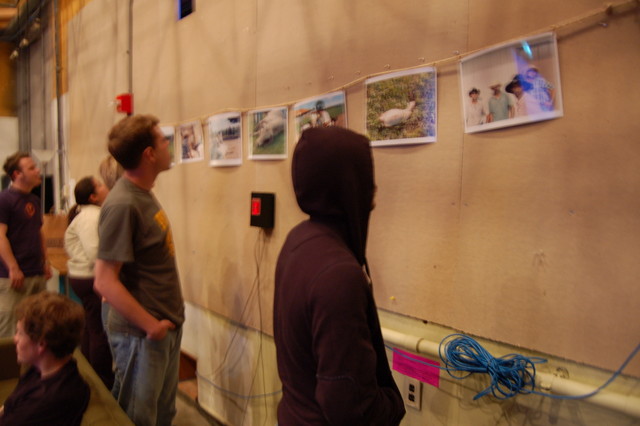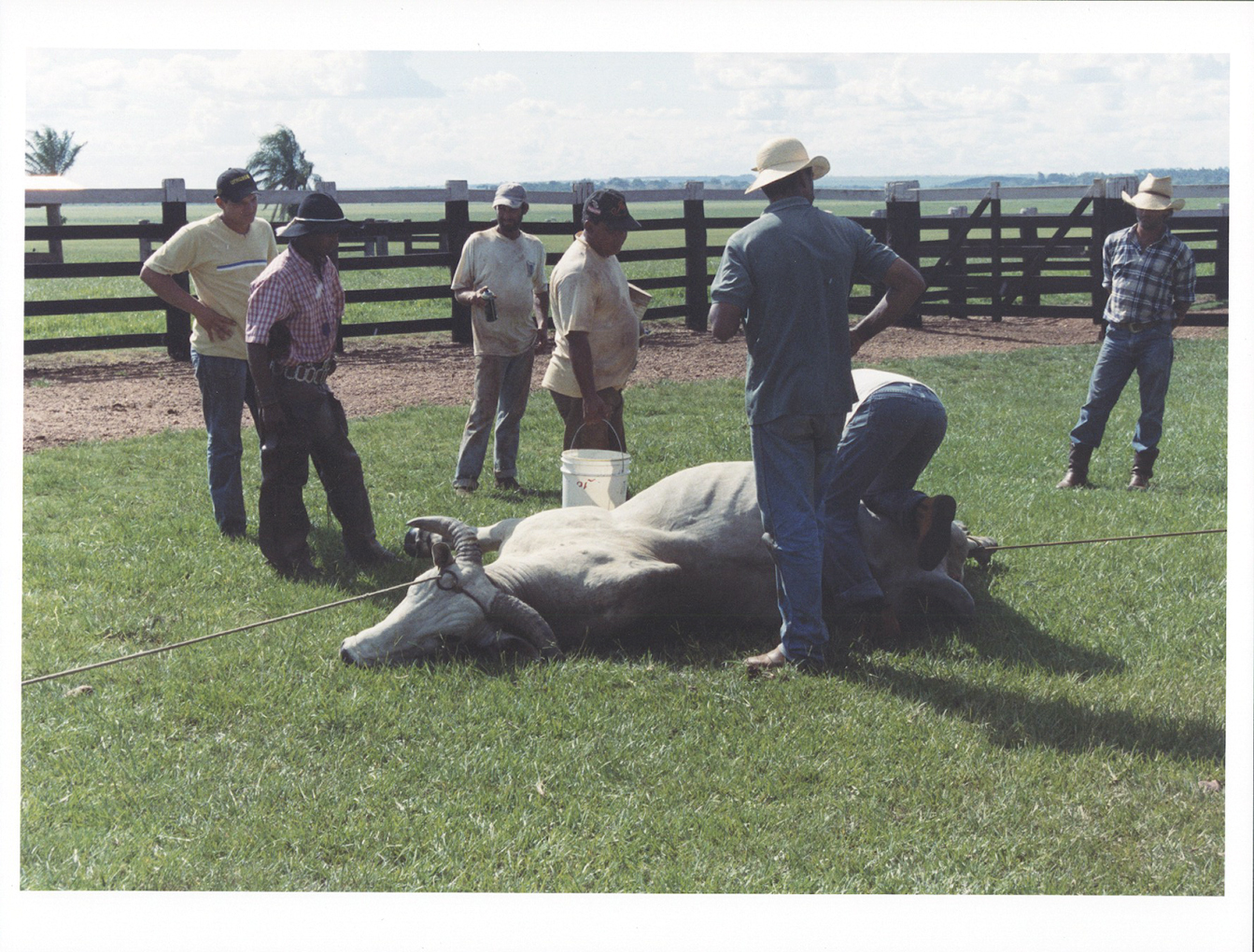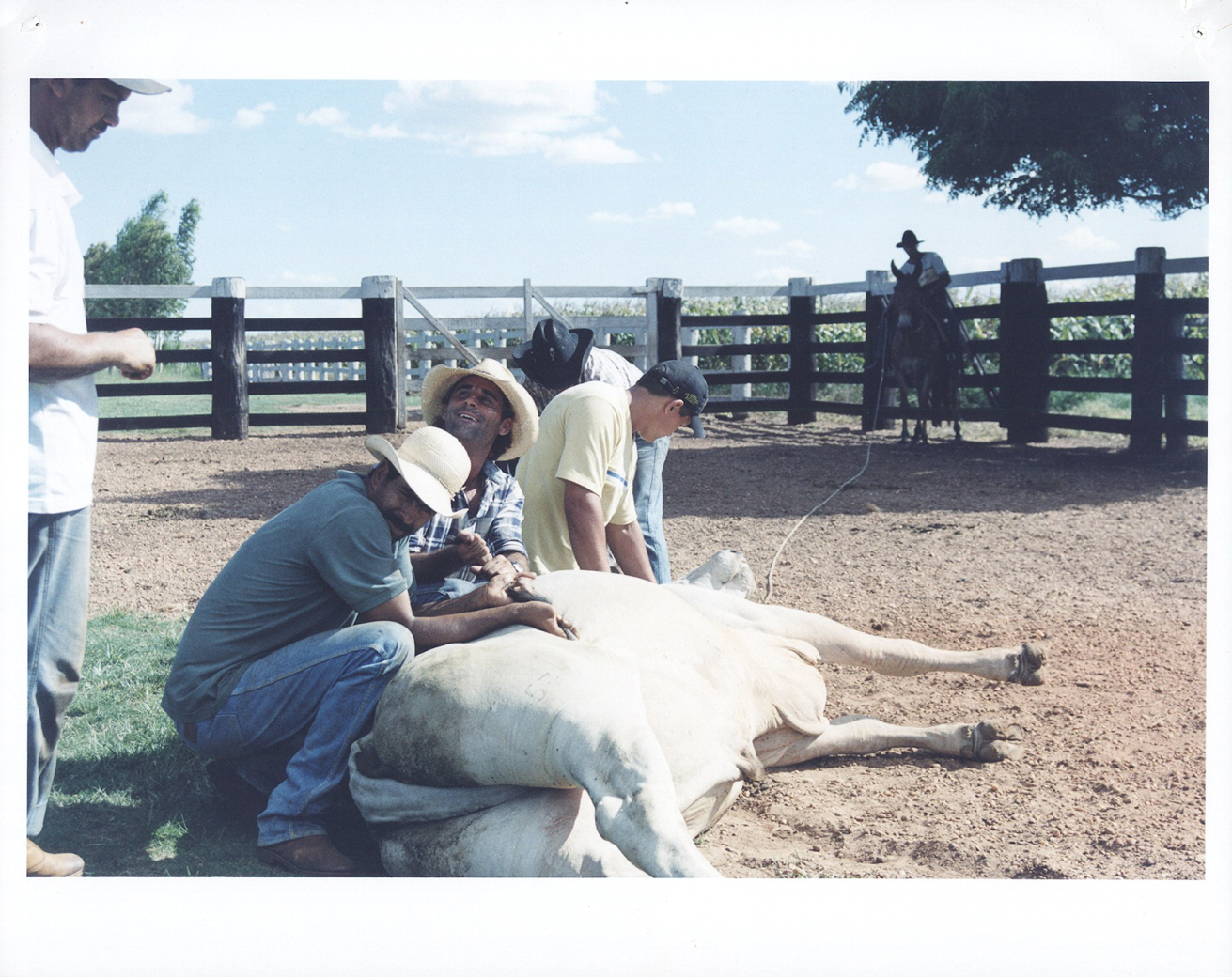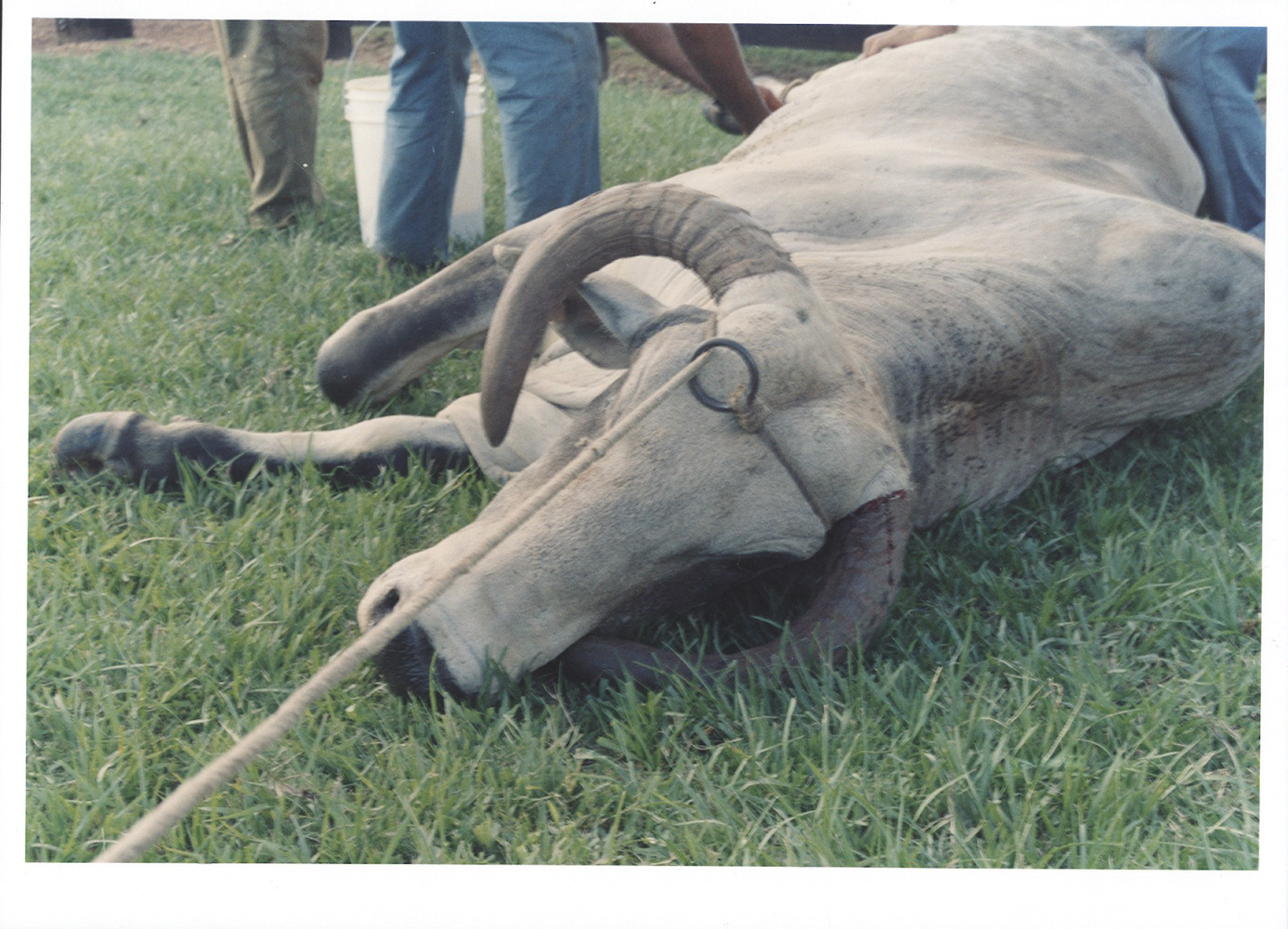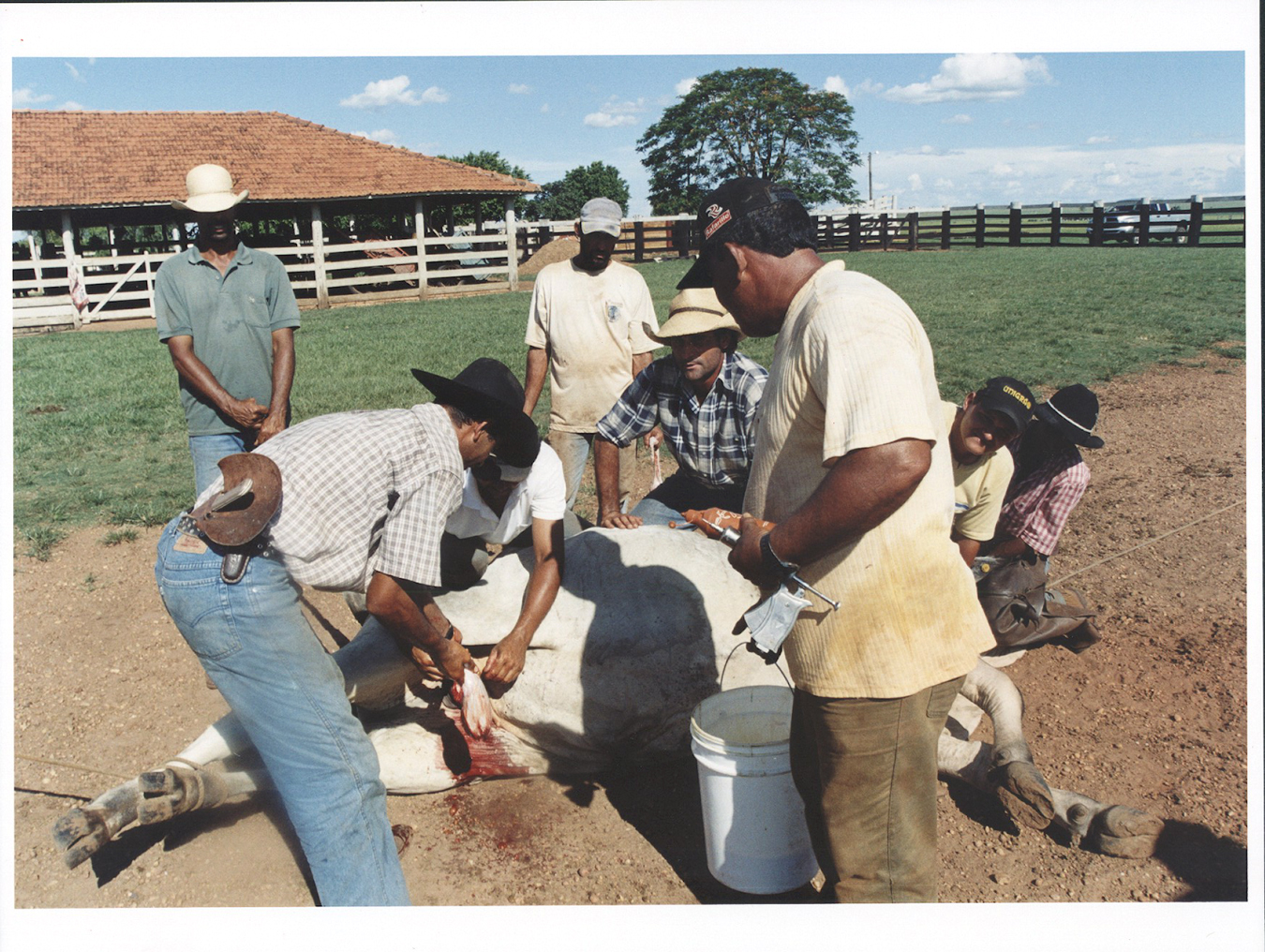
home
the ideas, the decisions, and the pictures
|
||
The idea for my second presentation came about from a desire to focus on a more literal and documentary-like approach to looking at death. When I got the negatives from Brazil back from the lab, I I saw all of the pictures of the castration session, and I knew then that they were what I had been looking for. Since I wasn’t going to use the actual castration images for my color class portfolio, I got very excited about getting the opportunity to print them myself. The first and last images were used for my other class, but I included them anyway because I felt that they gave more of an idea about who these people are, and what kind of culture they inhabit. These images are literally about death because they depict a creature having the part that enables them to create life, stripped away from them against their own will. They [bulls] are also being marked for death because castration signifies the final stage in raising cattle before a trip to the slaughterhouse. They are worth more if they weigh more, so ranchers profit more by castrating bulls, because they quickly gain a lot of weight. My intention was not to demonize the people in the photos. I just wanted to put these images up on the wall to allow everyone a moment to think a little while about what we, as humans, do to the animals that we eat. I decided to display the photos by actually putting hooks through the paper, and then hanging them from a rope; which is an important tool used to capture and hold the bulls during castration. I wanted to use hooks because when cattle are killed, their carcasses are hung from giant hooks as they pass down the slaughterhouse assembly line. The colors in the images are not all perfect because I was still trying to find my way around a color darkroom. (a completely different printing process from black and white) |
||
